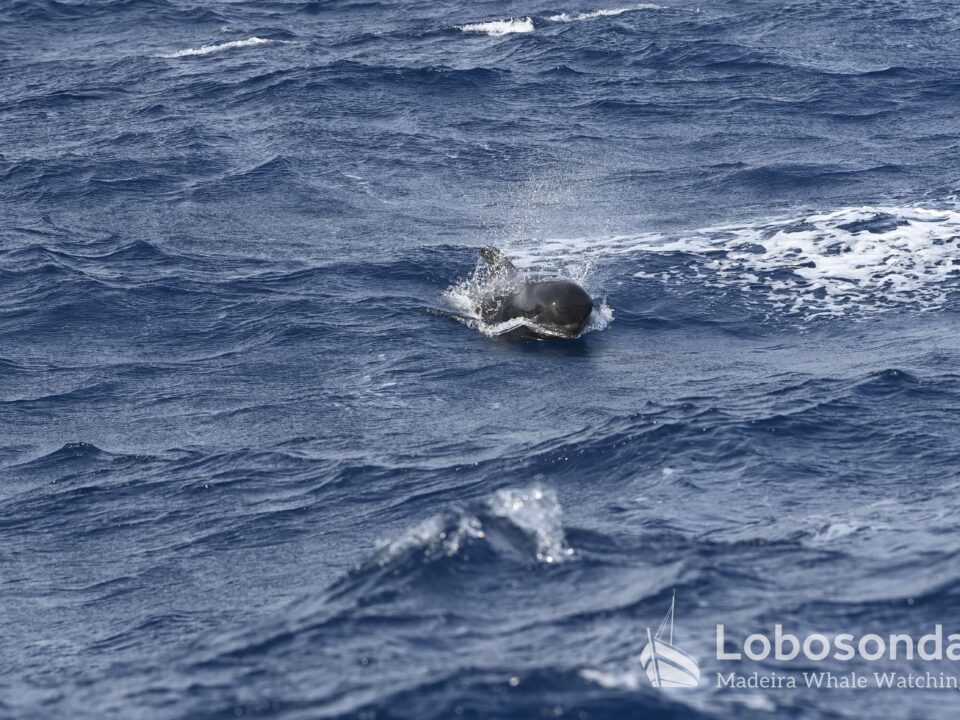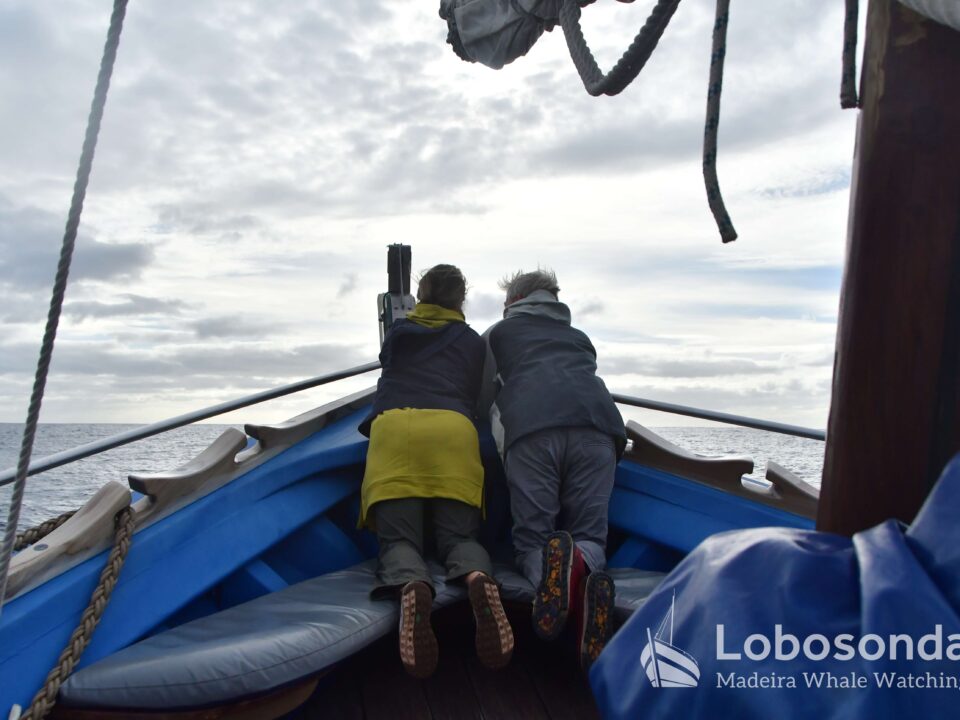
16.09.2024 – In unfamiliar waters
September 24, 2024
18.09.2024 – Little Brother
September 26, 2024I admit, the following blog might not be for everyone. I want to show you some insights about some smaller animals that swim alongside some of our cetaceans. Hitchhikers, basically. Often, we see Remora fish (Echeneidae) attached to whales and dolphins skin (see the previous blog “hitchhikers, part 1”). Remoras are relatively easy to shake off. But some hitchhikers are more stubborn, attaching themselves permanently to their hosts.
Today, we managed to encounter two of our stunning, most regulary sighted dolphin species, Bottlenose dolphins (Tursiops truncatus) and Atlantic spotted dolphins (Stenella frontalis). Besides, we had the chance to see another incredible, deep diving species, Blainville’s beaked whales (Mesoplodon densirostris) during some our afternoon tours. Blainville’s beaked whales can sometimes be extremely calm around boats, allowing us a closer look at them. In German, the family of beaked whales (Ziphiidae) is also called “Two-toothed whales” – referring to the only two teeth which remain in these mysterious animals’ gums. They have no use for feeding, as they do not erupt in females at all. Beaked whales feed on squid by suction feeding. As squids have not many hard body parts, the whales will not masticate their prey, rather rapidly suck them inside their mouths (like spaghetti, if you will).
In adult males, the teeth will indeed erupt outside of the mouth, just like tusk. They are thought to be used for male-male competition, not that this has ever been observed. Adult males though show large, impressive scars on their body, likely to be the remains of their fights. It is easy to tell an adult beaked whale apart from an adult female at sea by these white scarring. As if that wouldn’t be enough, we often observe clusters of barnacles on the male’s tusk. The rabbit-ear barnacle (Conchoderma auritum) needs a hard surface to attach – thus, the only part to grow on a beaked whale is its teeth. Believe me, rabbit-ear barnacles do not look as cute as they sound. They consist of long, dark red to brown tubes which branch into a pair of smaller ear-shaped tubes. At their end sit small feathered structures, so called cirri, that allow feeding on plankton in the ocean currents. Just as in temporary hitchhikers, the permanent attachment does not seem to harm the whale other than adding drag and weight. Well, and a rather unusual, scary appearance, in my opinion.
By Sarah Kather
Sightings of the day
Ribeira Brava
09:30 Atlantic spotted dolphins
13:30 Atlantic spotted dolphins
Stenella
09:30 Bottlenose dolphins, Risso’s dolphins, Rough-toothed dolphins
14:00 Bottlenose dolphins, Blainville’s beaked whales
17:00 Bottlenose dolphins, Atlantic spotted dolphins



















